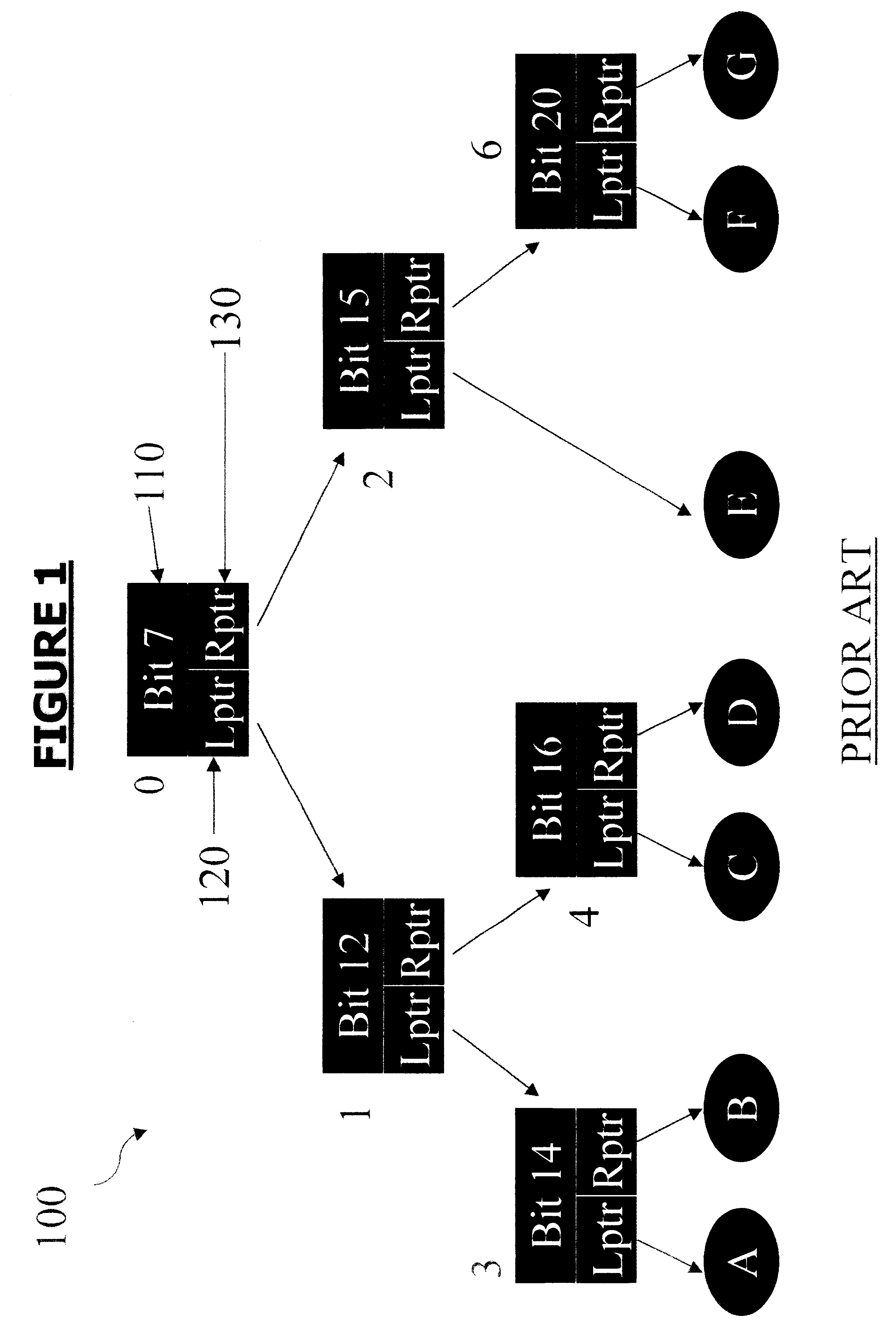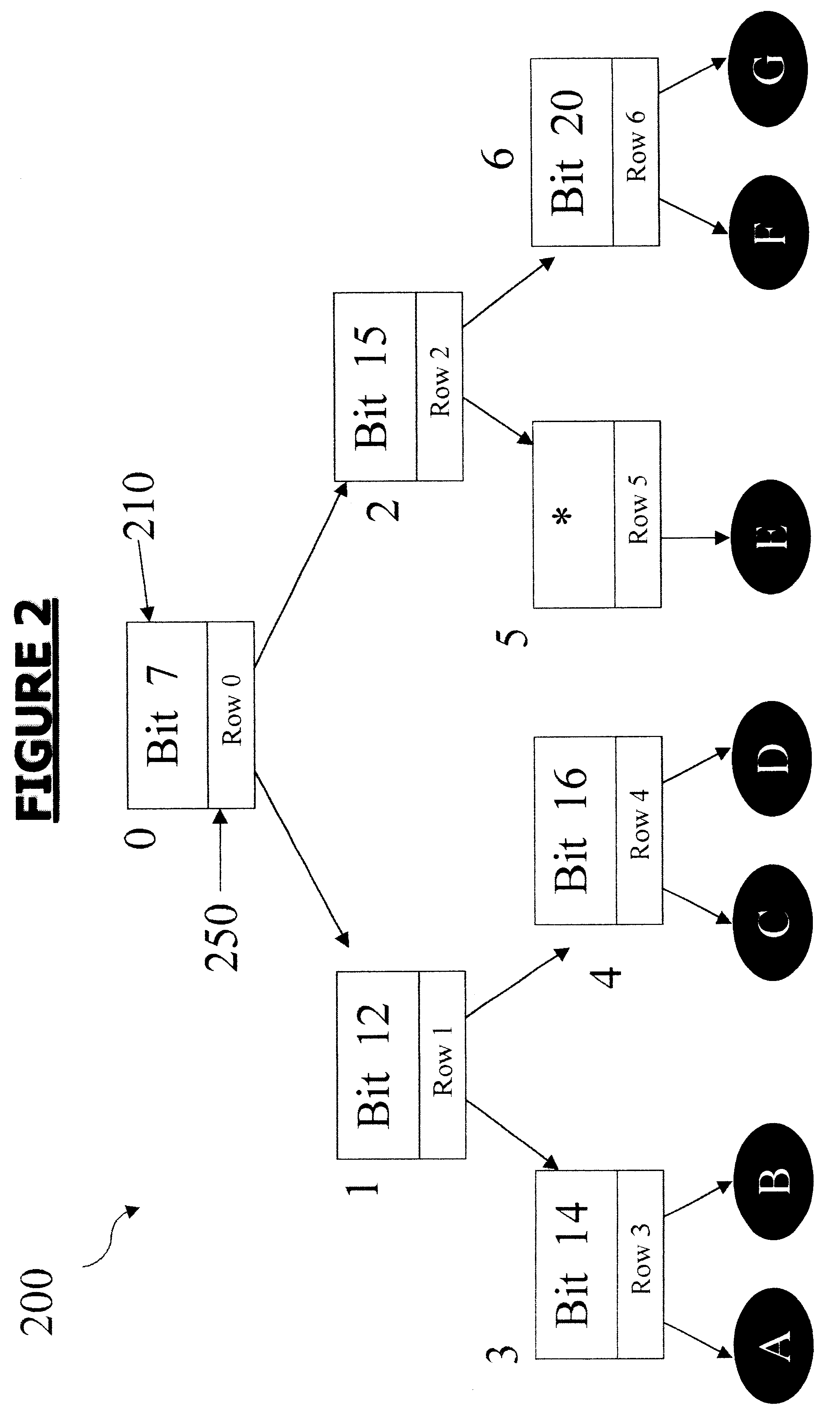Look-ahead tree structure
a tree structure and tree branch technology, applied in the field of tree branch structure, can solve the problems of poor worst-case performance of bsts, inefficient use of methods space, performance suffers,
- Summary
- Abstract
- Description
- Claims
- Application Information
AI Technical Summary
Problems solved by technology
Method used
Image
Examples
example 2
As in the preceding example, the following example assumes the data width of the memory 256 bit, i.e. 256 bits are read in one read cycle.
A look ahead memory structure is composed of a tree or sub-tree and its respective pointer table.
Each node in the tree is composed of:
Leaf (yes / no): 1 bit
Location: 9 bits
Next row is in node table or pointer table: 1 bit
Next row number: 3 bits
Leaf size: 2 bits
Total node size: 16 bits
For all 7 rows (nodes) of the node table, 112 bits (7.times.16 bits) are required.
As in the prior art, each pointer entry in the pointer table is composed of 18 bits. For 8 entries (pointers) in the pointer table, 144 bits (8.times.18 bits) are required.
For the entire look ahead structure containing 7 nodes (in a tree structure having a depth of three) and 8 entries (pointers) in the pointer table, the total memory space equals 256 bits (112+144).
Thus, an entire look ahead structure is read per memory cycle, i.e., a single memory access is required to walk down a 7 node...
PUM
 Login to View More
Login to View More Abstract
Description
Claims
Application Information
 Login to View More
Login to View More - R&D
- Intellectual Property
- Life Sciences
- Materials
- Tech Scout
- Unparalleled Data Quality
- Higher Quality Content
- 60% Fewer Hallucinations
Browse by: Latest US Patents, China's latest patents, Technical Efficacy Thesaurus, Application Domain, Technology Topic, Popular Technical Reports.
© 2025 PatSnap. All rights reserved.Legal|Privacy policy|Modern Slavery Act Transparency Statement|Sitemap|About US| Contact US: help@patsnap.com



